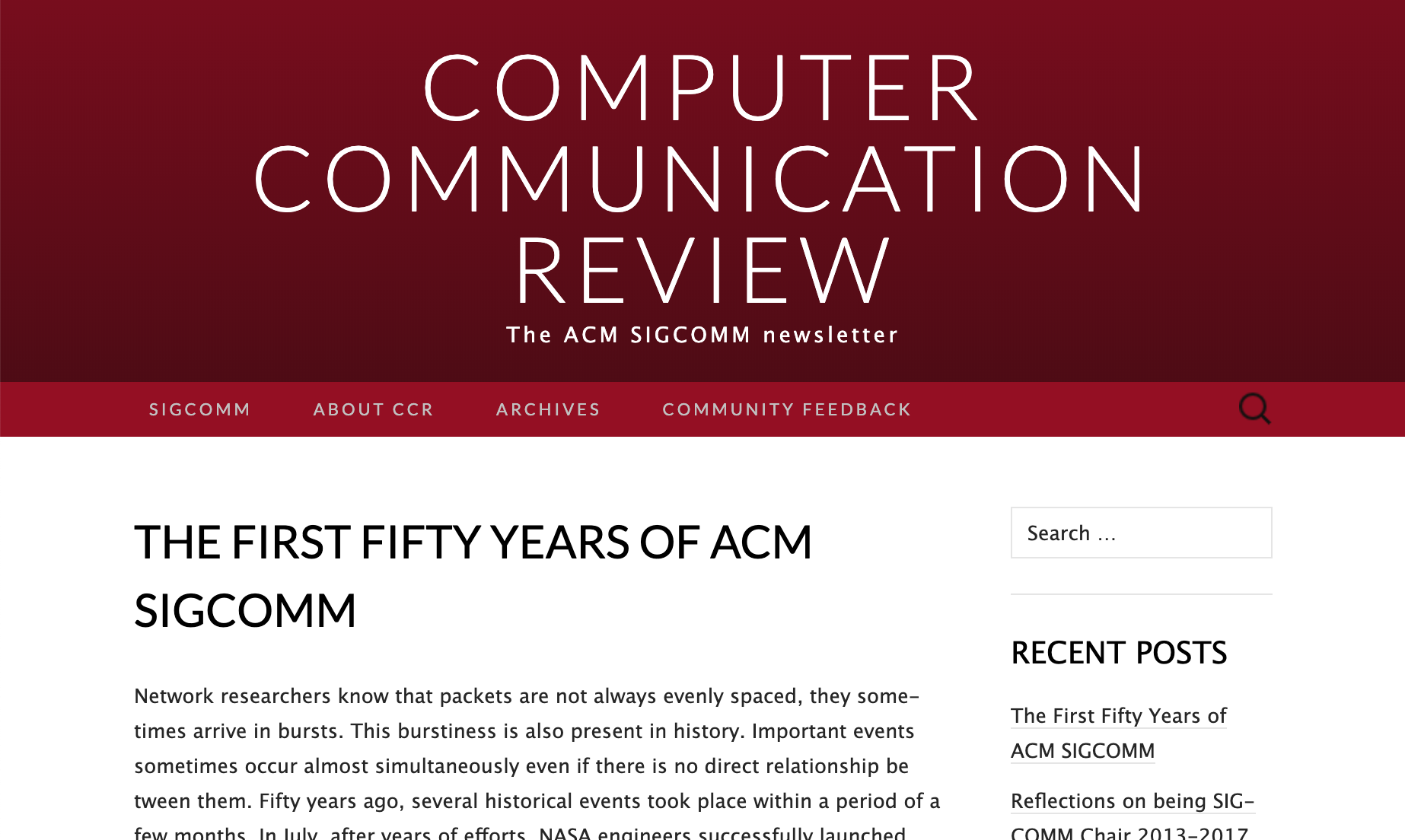As the Internet gets older, it's important for networking students to also study its history
Many network experts consider the beginning of the ARPANet network in the US as the first days of the global network that we call the Internet today. The first ARPANet nodes were installed during the latest months of 1969. The Internet turns 50 this year. At the same time, the first networking researchers agreed to create a working group that later between ACM’s Special Interest Group in Datacommunications (SIGCOMM). Many of the articles that have influenced the development of computer networks and the Internet in particular have been published by ACM SIGCOMM. Computer Communication Review recently published a special issue that includes technical articles that summarise the evolution of computer networks. Several of these articles are particularly interesting for networking students:
- Radia Perlman provides in Network Protocol Folklore: Whys and What-ifs, very interesting insights on the evolution of the Ethernet and network layer protocols
- Jeffrey Mogul and Christopher Katarjiev explain in Retrospective on Fragmentation Considered Harmful, the measurements that convinced the IETF to remove packet fragmentation on IP routers
- Walter Willinger, Murad Taqqu and Daniel Wilson explain in Lessons from “On the Self-Similar Nature of Ethernet Traffic” the difficulty of modelling packet arrivals on an Ethernet network and many of the consequences of their discovery
- Matt Mathis and Jamshid Mahdavi take a step back at the modeling of TCP congestion control algorithms in Deprecating The TCP Macroscopic Model.
- Nick McKeown, Guido Appenzeller and Isaac Keslassy analyse in Sizing Router Buffers (Redux) the evolution of the guidelines to dimension router buffers
- In Lessons from A first-principles approach to understanding the Internet’s router-level topology, Walter Willinger, David Alderson and John Doyle revisit a large number of studies that have analysed Internet topology data collected by using traceroute and the importance of understanding how network operators design their networks to analyze such results
Other more advanced topics are also discussed in this special issue that is entirely available online.

*This blog post was written to inform the readers of Computer Networking: Principles, Protocols and Practice about the evolution of the field. You can subscribe to the Atom feed for this blog.
